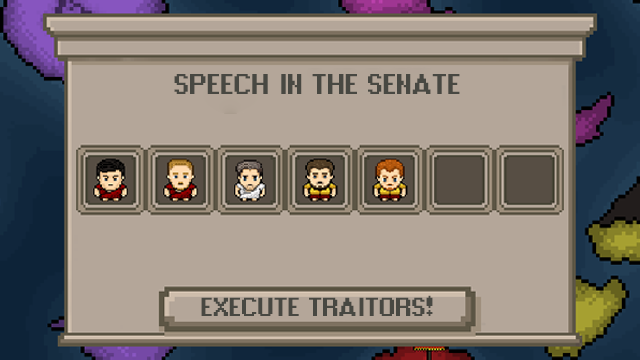

Caesar, like Marius and Sulla before him, seized Rome with a Roman army, although this time it was bloodless.Īs Pompey and the Senate regrouped in Greece, Caesar raced to Spain to quash Pompey’s allies there, then turned back to pursue Pompey. After Caesar crossed the Rubicon, in 49 BC, the Senate and Pompey, who had agreed to fight for the Optimates, panicked and fled to Greece. The Senate lost all ability to control its generals.

Pompey and Caesar, who were young and ambitious men at the time, were taking notes.Īs first Pompey, then Caesar, used Marius’ and Sulla’s methods to win their troops’ loyalty, the Roman Republic became weaker and weaker. But he had become a powerful general, and then an absolute ruler, by buying the loyalty of his troops. Sulla died not long after becoming dictator, and the Romans absolutely hated him. After his victory, Sulla became dictator -absolute ruler-and killed thousands of Roman citizens. First Sulla, then Marius, invaded, occupied, and pillaged the city of Rome-a Roman army sacking Rome!-and after Marius’ death in 86 BC his allies continued fighting until Sulla’s ultimate victory in 83 BC. Marius was a popularis and Sulla was an optimas, but really both of them just wanted to be in charge, and both had armies fiercely loyal to them. Marius and another Roman general, Sulla, went to war against each other in 88 BC. And that’s how the bellum civile (civil war) began. Soon, soldiers became more loyal to the general who was paying them than the country they were fighting for. Other Roman generals noticed and started buying the loyalty of their soldiers, too, by promising them a share in the spoils of war, and land after retirement. These changes made the army a much larger and more effective fighting machine-and it made the soldiers love Marius. For the first time, they had a way to move up in the world. As you can imagine, poor Romans rushed to enlist. He stipulated that the Roman state would provide weapons, training, a salary, and land after a soldier retired. (There were poor soldiers, called velites, who fought wearing basically no armor at all!) Marius changed all this. This meant, of course, that the army had been made up almost entirely of upper-class citizens. Before Marius, soldiers had to own property and buy their own equipment. He also dramatically changed the Roman army. This was only the beginning of the violence.Īnother popularis around this time was a plebian named Gaius Marius, who despite his low status was elected consul -president, basically-seven times. Two of these populares, brothers named Gaius and Tiberius Gracchus, were assassinated by the patricii for their support for redistributing land to the plebs. The Populares (from the Latin populus, ‘people’), on the other hand, believed that the plebs should have greater political and economic power, and that land should be redistributed from rich to poor. The Optimates (from the Latin optimus, ‘best’) believed that Rome should continue to be run by the patricii and the Senate, and that the wealthy should be able to keep their lands. In those times there was almost no way to have money without having land.Īround the year 100 BC, two political parties began to emerge: the Optimates and the Populares. The patricii controlled most of the land in Italy, and the plebs had almost none. Although there was voting, and elections were open to all citizens, the votes were weighted-you could even say ‘rigged’-so that only the votes of the upper class actually counted.Īlthough the plebs fought for, and eventually achieved, political equality with the patricii, they were still much poorer. However, the republic wasn’t a democracy in the sense we know today. As a republic, Rome was ruled by Senatus Populusque Romanus, ‘The Senate and the People of Rome,’ rather than by a single king. There were two ordines, or social classes, in ancient Rome: the plebs, the lower class and the patricii, the upper class, which dominated the Senate and the political offices of the Roman Republic.Īccording to legend, the Roman Republic was founded in 509 BC, after the last King of Rome was driven out of the city. Image by Jbribeiro1 on Wikimedia Commons, licensed under CC-PD-Mark Ordines


 0 kommentar(er)
0 kommentar(er)
